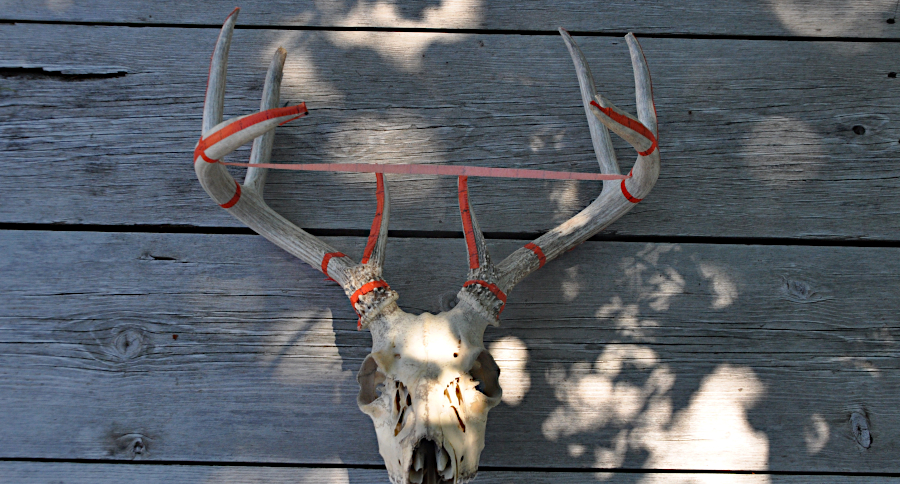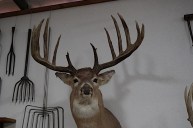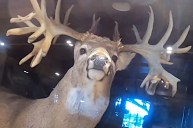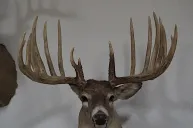Many deer hunting enthusiasts have been fortunate enough to harvest a big buck. But it can be difficult to convey the actual size to other hunters without knowing the number of points. In fact, one of the main reasons that buck scoring systems were developed and implemented is that they allow the scorer to combine the measurement in inches of the rack size with the antler points to give a better impression of how large a buck's antlers—and the corresponding animal—really are. Deer scoring also allows organizations like the Boone & Crockett Club and the Pope and Young Club to keep record books of the largest big game hunters seek: whitetail deer.
Even if you have no interest in filing for a record, it can be fun to score your own deer, just to see what numbers you get. Sure, an official gross score of your deer antlers by a certified measurer is needed to get a huge buck into an "official" record book, but anyone can score their own deer at home to get a rough idea of where it sits as far as size goes. (And to, say, compare it to a friend's deer.)
Three Basics for Official Deer Scoring
Interested in scoring your whitetail deer's antlers? Remember these three important baseline rules:
- The deer's skull and antlers must have air-dried for at least 60 days.
- The deer's skull plate cannot be broken.
- The deer's rack cannot have any repaired points.
Finally, antlers in velvet are not eligible for official scoring. Follow these rules so your big buck avoids deer-record controversy.
The Simple Tools For Scoring Your Buck
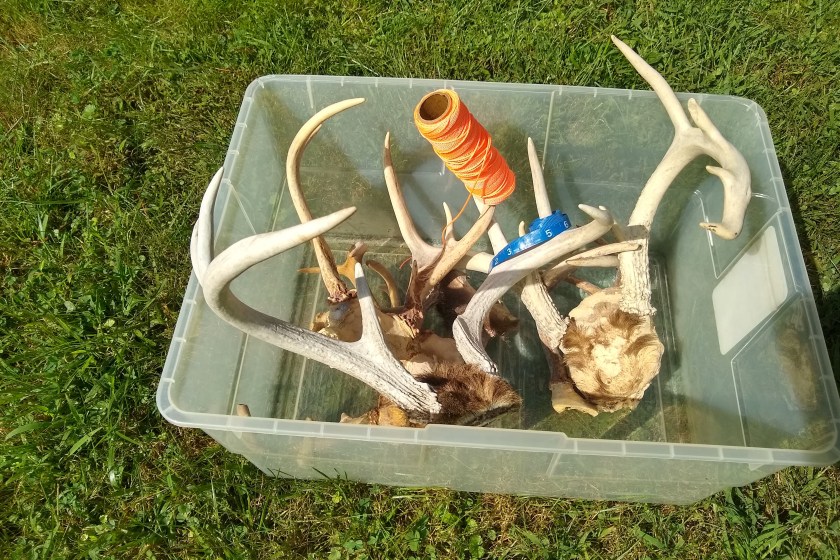
Craig Raleigh for Wide Open Spaces
It doesn't take much to score a deer. Gather these essentials:
- A scoring sheet
- A soft-sided or flexible tape measure
- Braided masonry line or paracord
- Optional: lightweight steel cable, baling wire, or Trophy Tape
Start by finding a scoresheet from the Boone & Crockett or Pope & Young's websites. Many hunters prefer to use the B&C's online score calculator, which requires you to input simple data: just tine length and circumference. This is a very simplistic way of scoring (and we'll get into the specifics in a moment), but the B&C calculator does all the addition, subtraction, and calculation of deductions for you. At the end, it pumps out a scoresheet with all the relevant data that you can save and print for your own records. For an unofficial score, it's a great tool.
Next, grab a flexible measuring tape. The best type for scoring a deer is made of cloth or plastic, like the tape measures used for sewing. These are generally more flexible than steel tape measures and make precision measurements easier and more accurate. Also make sure you can get numbers to the nearest 1/8 of an inch.
Additionally, a string or cable will make it easier to align your measurements for the overall length of the main beam (more on that below). Trophy Tape works well, but each roll is only good for one deer; it's also a hassle to pull all the tape off once you're done scoring.
A Step-By-Step Guide to Scoring Your Buck
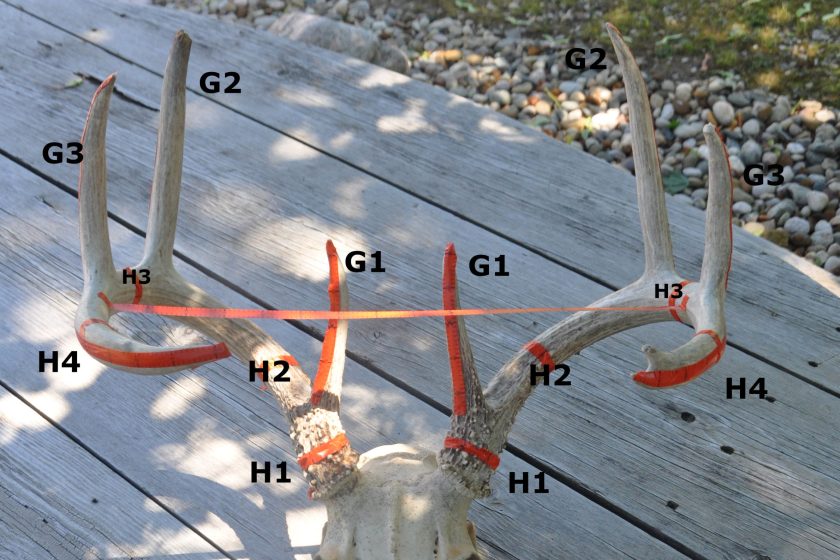
Travis Smola for Wide Open Spaces
1. Measure the Inside Spread
To start your antler score, measure the greatest spread of your whitetail buck by using the widest point between the antlers. This is fairly simple and a great way to start, because it's perfectly "legal" to find and use the absolute longest distance for your final score.
The old saying, "Those horns were way outside his ears!" can now be turned into a number for all to see.
2. Measure the Four Circumference Points
Measuring and scoring your buck's rack circumference depends on four points.
- H1: The smallest width measurement between the burr (the base of the antler, where it connects with the head) and the origin of the first point.
- H2: Generally the smallest circumference between the G1 and the G2. If there's no G1, take the circumference at the smallest point between the burr and G2, and use this measurement as H1 and H2.
- H3 and H4: In the case of a six-point buck (for example), you won't have a G3 or G4, so find the smallest circumference around the center area between the last two points and use this as both the H3 and H4 measurements. In the case of a deer that has antler tines beyond G4, you still only get four measurements on each side of the rack.
In truth, there are eight total areas to measure your buck's antler thickness, but you'll need to do this at the smallest circumference for each. No matter how many tines your buck has, you still must do this at four places per side on the rack in question. (Assuming of course that the antlers you are measuring have two distinct sides.)
Take the first measurement at the smallest circumference point between the burr and the brow tine. If the brow tine (G1) is missing, take your first and second main beam circumference measurements from the smallest place between burr and first main antler point.
This goes for subsequent areas that are lacking tines. So on an eight-point buck where there's no G4 present, take the H4 measurement halfway between the third point and the tip of the main beam.
3. Measure the Tine Length
Starting from the base of the skull and going outwards towards the tip of the furthest antler on either antler, the tines are designated by a letter/number system that denotes the consecutive tines until there are none left but the far tip. Going from inside to outside, identify the antler points:
- G1: Brow tines.
- G2: Generally, the first large tine and usually the longest.
- G3: The next antler in line. If the deer is a six-point buck, there's no G3 or G4.
To score the full tine length of a deer's rack, begin with one side of your deer's antlers and move the process to the other to finish. If you want, you can measure one side of a fairly symmetrical rack and just double it to get a reasonable assessment of the gross length for starters.
One good rule of thumb is to stretch a piece of tape across the base of the tine so that it aligns with the top of the main beam. Now measure from the top of the tape to the tip of the tine. Note: This only works for tines that grow straight from the main beam, as on most typical whitetails.
Abnormal points, or points that do not grow straight such as bent tines or drop tines, are measured separately from the main tines and are recorded in their own column to score deer antlers.
To be considered a point, a tine must be at least 1 inch long and greater in length than it is in width.
4. Measure the Main Beam
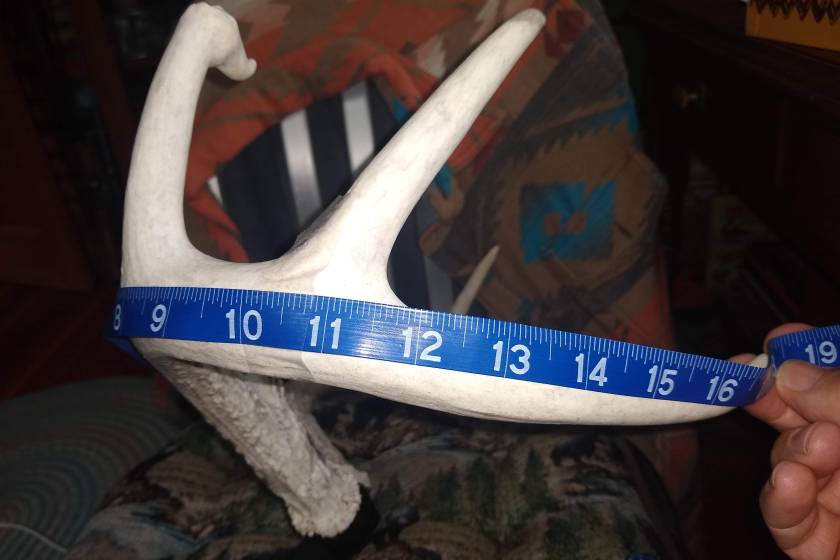
Craig Raleigh for Wide Open Spaces
This is where your line, cable, or paracord come in handy. This step is both quite simple to do and sometimes a little annoying, so have your tape ready again.
Starting from the lowest outside edge of the burr, stretch your line around the outside contour of the main beam and along the centerline of it, taping it to keep it in place.
Mark, clip, or pinch the end of the line or cable, remove it to a flat surface and then measure the distance. Don't forget to measure both sides of the main beam. You now have the length of the main beam to add to your score.
5. Score Your Deer
With all of your measurements taken, you can now begin the process of moving these numbers towards the ultimate goal of the net score. First, simply add up all of the measurements that you took to get the "green gross score"—but hold on.
Because the underlying basis for scoring any antlers is symmetry between the left and right sides, you must take into account the deductions for differences in the measurements between the two sides. This means that if the brow tines (G1) are different lengths, you have to deduct the difference from your final score.
This is also true for the differences between each H measurement that you make and for any abnormal points that you encounter. By using the B&C method, your trophy drop-tine buck can only be net-scored by deducting them.
What Signifies a Good Score for a Buck?
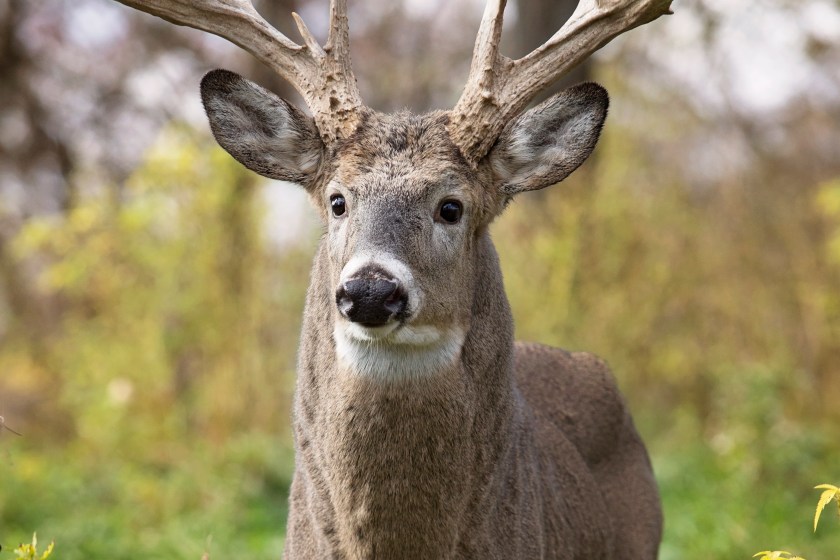
Getty Images, Lynn_Bystrom
If you ask this question to five different deer hunters, you'll probably get five different answers, but the response that I most often hear is 150. The minimum score for the Boone & Crockett Club is 170 inches, andfor Pope and Young's bowhunting scores, it's 125.
Other Scoring Bodies
Other scoring bodies for whitetail deer beyond Boone & Crockett include Pope and Young, Buckmasters, and Safari Club International. Both Buckmasters and Safari Club allow abnormal points to count toward the gross and net scores, while Buckmasters is the only one that doesn't include an inside spread measurement for scoring.
What Is the Current World Record Whitetail Buck?
The Milo Hanson buck—taken in Biggar, Saskatchewan back in 1993—is still the current world record typical whitetail buck, measuring in at an incredible 213 5/8 inches.
